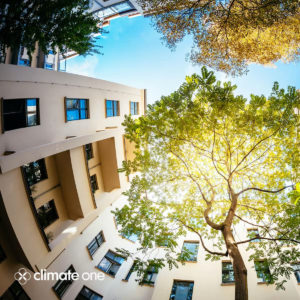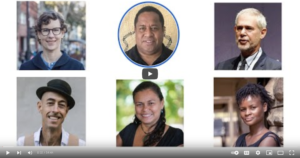September 21, 2022 // The stakes couldn’t be higher. Finding solutions to climate change so that people and nature can thrive together is the opportunity and challenge of the moment. ‘The Atlantic’ will assemble policymakers, climate innovators, scientists and business leaders to address today’s most urgent climate challenges and solutions to build a more resilient future.
As the world looks for new ways for cities to adapt to climate change, design expert Alison Sant believes that potential solutions lie at the front lines and with the people most directly impacted. In her recent book “From The Ground Up: Local Efforts to Create Resilient Cities,” Alison shows how communities are raising the bar to make cities places…
Louisiana currently loses one football field of wetlands approximately every hour and a half. The state’s Comprehensive Master Plan for a Sustainable Coast established a $50 billion strategy for protecting and restoring the remaining wetlands– advancing solutions including marsh creation, beach and dune restoration, coastal forest conservation, flood walls, and sediment pipelines, which transfer river sediment to nourish marshlands. However,…
In New York City, the Billion Oyster Project was launched in 2014 by Murray Fischer and Peter Malinowski. At their headquarters at the Harbor School on Governors Island, BOP houses their laboratory and runs a shell recycling program where 8,000 lbs of shell per week are collected from over 70 restaurants and cured in giant mounds to be used in…
Historically, Bayview-Hunters Point has had the highest rates of home ownership among Black people in San Francisco but has suffered from generations of environmental injustice and neglect for basic infrastructure. Today, development of a network of parks along the southern waterfront is creating an opportunity for residents to envision the future of their neighborhood and economically participate in the investments…
New York is the most populous city in the United States. Known as the “concrete jungle,” it is often more valued for its densely built skyline than its natural landscape. However, over 40% of New York City’s land cover is green. Using fieldwork and remote sensing data, the Natural Areas Conservancy assessed the condition of 10,000 acres of natural areas…
For decades American cities have experimented with ways to remake themselves in response to climate change. These efforts, often driven by grassroots activism, offer valuable lessons for transforming the places we live. In ‘From the Ground Up: Local Efforts to Create Resilient Cities,’ design expert Alison Sant focuses on the unique ways in which US cities are working to mitigate…
This Climate One podcast features two experts in Alison Sant’s book “From the Ground Up: Local Efforts to Create Resilient Cities.” Tamika Butler, is a national expert on the built environment and equity. She discusses her essay for the book: “Building Inclusive Cities From the Ground Up.” Morgan Grove, is a research scientist and the team leader for the US…
By Maureen Nandini Mitra // The key to regenerative cities ultimately rests in a broad sense of community.
June 26, 2022 // Livelihoods and Landscapes, a panel discussion: People around the world are restoring animals, plants, and trees in their landscapes and seascapes for future generations, and, in doing so, are finding creative ways to make a living. Hear from visionaries and changemakers from the Pacific Islands, the Caribbean, Africa, and the United States.









